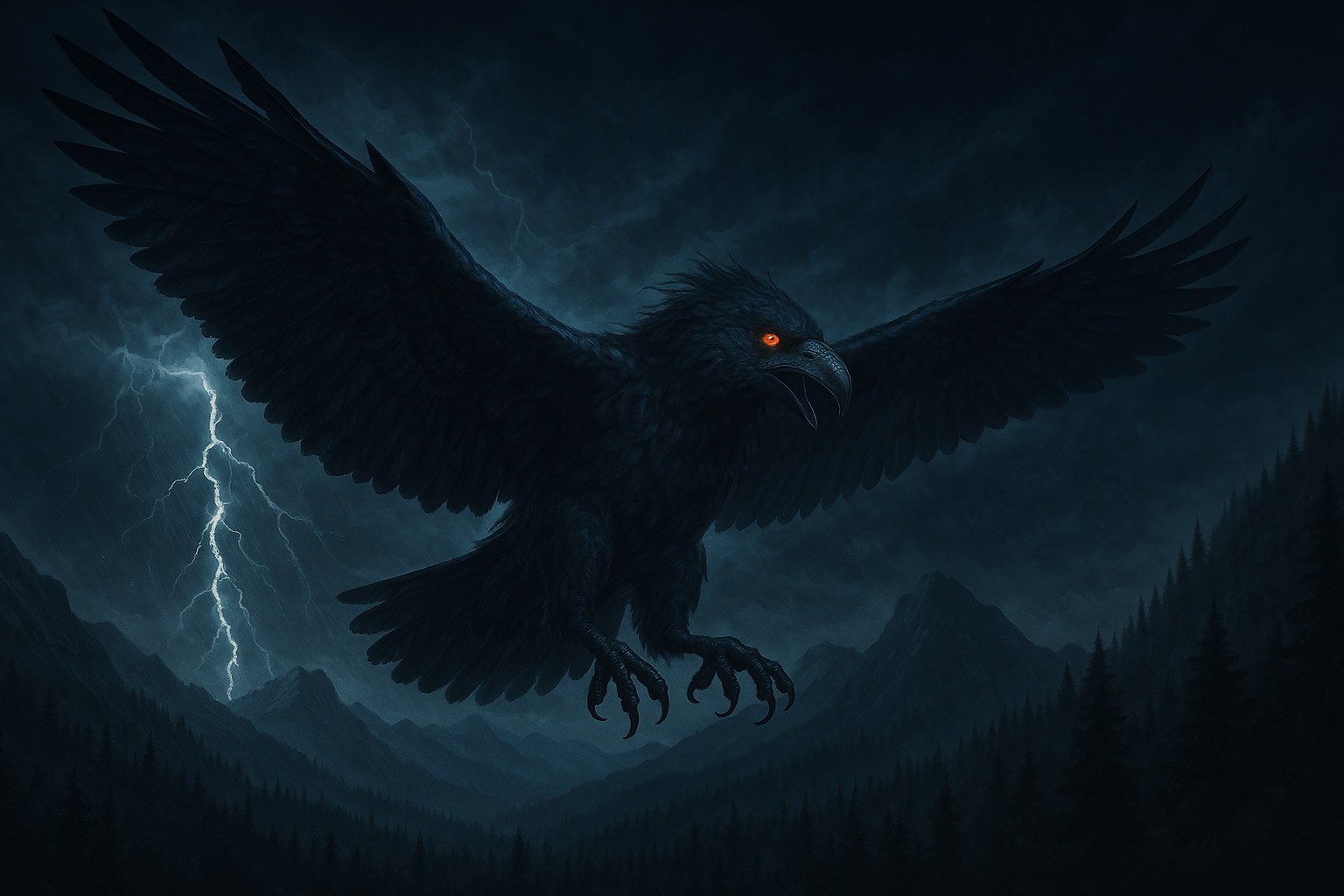Thunderbird is a powerful and mysterious figure in Indigenous North American mythology and modern cryptid lore. Described as an enormous bird with a wingspan large enough to block the sun and a cry that sounds like thunder, the Thunderbird has captured imaginations for centuries. But where do these stories come from, and could they be based on real animals or ancient sightings?
- The Origins of the Thunderbird Legend
- Thunderbird Sightings in Modern Times
- Could Thunderbirds Be Real? Scientific Theories and Explanations
- Thunderbird in Culture and Media
- Respecting the Roots: Thunderbird as Sacred Symbol
- Thunderbird Sightings: Myth or Memory?
- FAQ
- What is a Thunderbird?
- Are Thunderbirds real animals?
- Where do Thunderbird sightings occur?
- Is Thunderbird a cryptid or a spiritual being?
- Could Thunderbirds be surviving pterosaurs?
The Origins of the Thunderbird Legend
The Thunderbird is deeply rooted in Native American traditions across numerous tribes, including the Lakota, Ojibwe, Algonquin, and Kwakwaka’wakw peoples. For these cultures, the Thunderbird is not a cryptid or monster — it’s a spiritual being with divine powers, often associated with storms, rain, strength, and justice.
According to many oral traditions, Thunderbirds flap their wings to create thunder and shoot lightning from their eyes. They are said to live on mountaintops or in the sky, watching over the world and sometimes punishing those who act unjustly.
Thunderbird Sightings in Modern Times
While the Thunderbird is a sacred symbol in Indigenous culture, the modern fascination with Thunderbird sightings leans more toward cryptozoology. Reports of massive birds, often described as having wingspans of 15 to 20 feet, have occurred since the 1800s — and continue to this day.
Some of the most notable sightings include:
- Illinois, 1948: A group of witnesses reported seeing a bird with a wingspan as wide as a small airplane flying overhead.
- Alaska, 2002: A bush pilot and several locals described a giant bird with an estimated wingspan of 14 feet near the village of Togiak.
- Texas, 1976: Two teenagers claimed a massive bird swooped down at them. Sketches resembled a prehistoric-looking creature.
Many of these reports include features such as featherless heads (similar to a vulture), dark plumage, and low, gliding flight — leading to theories about misidentified animals or even surviving prehistoric species.
Could Thunderbirds Be Real? Scientific Theories and Explanations
Though there is no verified physical evidence of Thunderbirds, several natural explanations have been proposed:
- Misidentified large birds: Birds like the California condor (wingspan up to 10 feet) or Andean condor could appear huge at a distance.
- Extinct megafauna: Prehistoric birds such as Argentavis magnificens — with a wingspan of over 20 feet — once lived in South America. Some speculate remnant populations survived into human memory.
- Flying reptiles or pterosaurs: A fringe theory claims people are seeing modern pterosaurs — though there is no scientific evidence that such animals still exist.
- Atmospheric or optical illusions: Fog, light conditions, and perspective can distort the perceived size of a bird in flight.
Thunderbird in Culture and Media
The Thunderbird has appeared in comics, films, video games, and even state symbols. For example:
- The University of British Columbia uses a Thunderbird as its athletic mascot.
- In Marvel Comics, Thunderbird is a Native American superhero.
- Cryptid enthusiasts rank the Thunderbird alongside Bigfoot and the Chupacabra as legendary unexplained creatures of the Americas.
However, it’s vital to differentiate pop culture versions from the Thunderbird’s spiritual significance to Indigenous communities, where it is revered rather than feared.
Respecting the Roots: Thunderbird as Sacred Symbol
While modern cryptozoology has popularized the idea of Thunderbirds as mysterious flying beasts, it’s essential to honor the cultural context. For many Indigenous peoples, the Thunderbird is a protector, an enforcer of moral law, and a figure of awe — not a cryptid to be hunted or sensationalized.
Thunderbird Sightings: Myth or Memory?
Whether rooted in spiritual belief, misidentified wildlife, or ancient memory passed down through generations, the legend of the Thunderbird continues to inspire curiosity. With its deep roots in oral history and its persistent appearance in modern accounts, the Thunderbird occupies a space between the real and the symbolic — one that invites exploration, respect, and open-minded inquiry.
FAQ
What is a Thunderbird?
The Thunderbird is a legendary creature from Indigenous North American folklore, often depicted as a giant bird that creates thunder and lightning.
Are Thunderbirds real animals?
No confirmed evidence exists. Some believe sightings are misidentifications of large birds like condors or cultural memory of extinct megafauna.
Where do Thunderbird sightings occur?
Sightings have been reported across the United States and Canada, especially in remote or mountainous regions.
Is Thunderbird a cryptid or a spiritual being?
In Native American cultures, the Thunderbird is a spiritual figure, not a cryptid. In modern cryptozoology, it is treated more like a legendary animal.
Could Thunderbirds be surviving pterosaurs?
This is a fringe theory not supported by scientific evidence. All known pterosaurs went extinct 66 million years ago.
# Thunderbird sightings, Native American legends, giant bird cryptids, flying creature folklore, thunderbird symbolism, unexplained winged creatures, American cryptids, pterosaur theories, cultural myths of North America, thunderbird reports modern









Hello! This post could not be written any better!
Reading through this post reminds me of my old room mate!
He always kept chatting about this. I will forward
this article to him. Fairly certain he will have a good read.
Thanks for sharing!